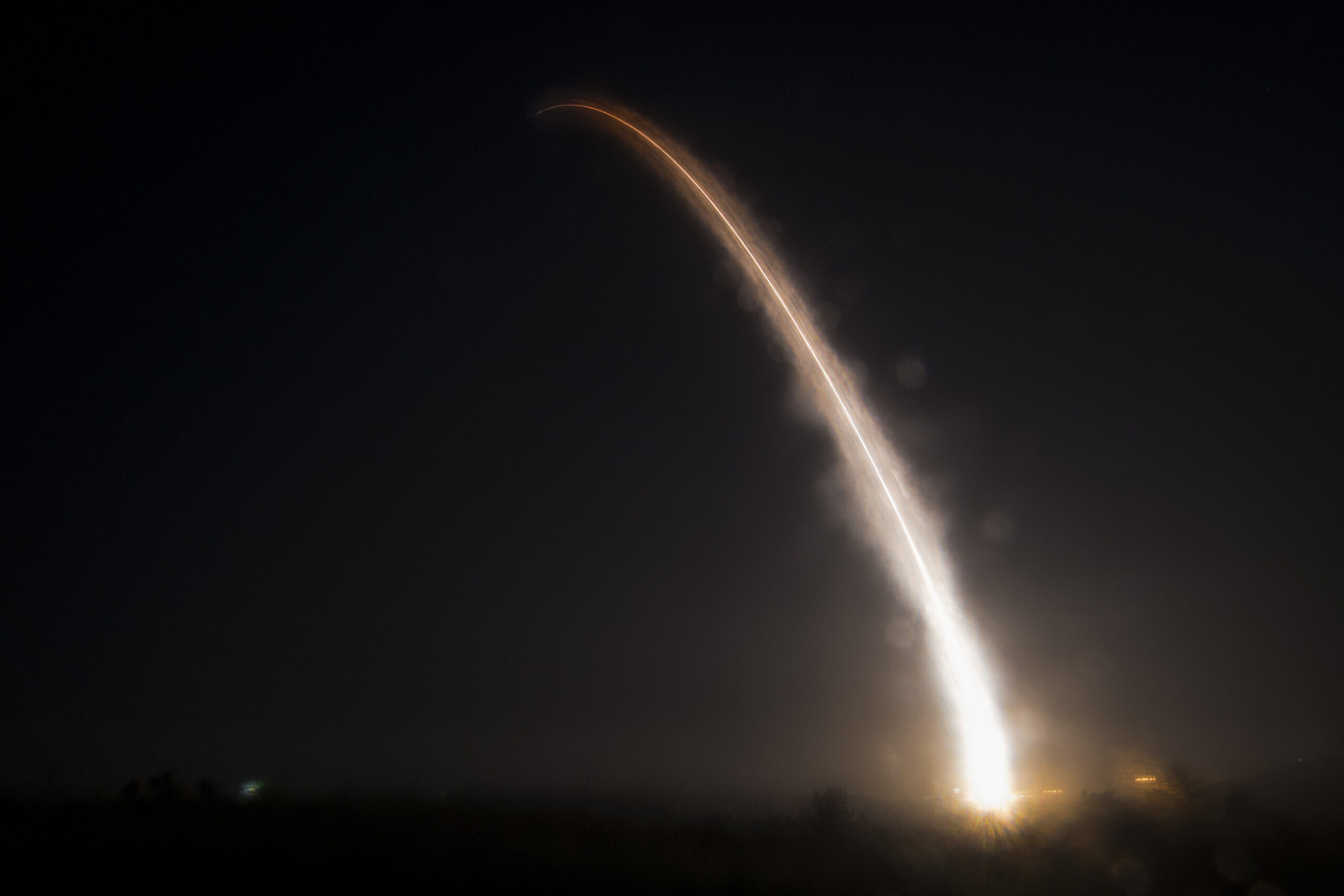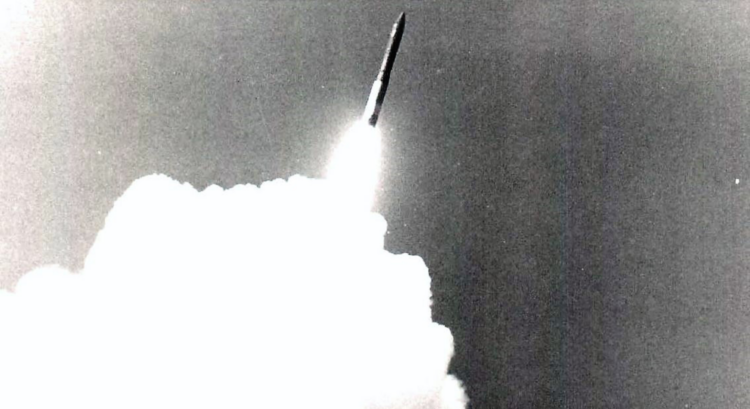As the zenith era of Minuteman III continues to descend gradually, the Air Force is now scouring for a viable reentry vehicle for its contemporary successor.
The US Air Force issued a solicitation notice seeking the Next-Generation Reentry Vehicle (NGRV) for the future American Ground-Based Strategic Deterrent (GBSD) weapon system.
NGRV is that maneuverable part of the intercontinental ballistic missile (ICBM) that carries the payload—meaning the nuclear warhead—autonomously tracks ground targets, can shift trajectories during the flight phase, and “reenter” the atmosphere once the lethal projectile has been released.
Posting a request for information on Wednesday, the Department of Defense (DoD) is kicking off its market research and acquisition efforts, aiming to award contract/s for future reentry vehicles by fiscal 2026.
More information on the project is classified, but the service aimed to develop a new reentry vehicle with heightened “accuracy, lethality, and survivability.”
America’s Future Nuclear Defense
According to a primer published by the Congressional Research Service earlier this year, the LGM-35A Sentinel ICBM is slated to succeed the aging Minuteman III ICBM in the US nuclear force structure.
For more than 50 years, the Minuteman III served as the land-based leg of the United States’ strategic nuclear triad alongside submarine-launched ballistic missiles (SLBM) Trident D-5s and nuclear-capable B-52 and B-2 bomber planes.
Initiatives to start the next-generation ICBM program began in the 2010s, along with the modernization of the rest of the nuclear triad components. By 2020, the DoD awarded defense contractor giant Northrop Grumman a whopping $13.3 billion contract after Boeing withdrew the competitive bid.

Northrop is presently collaborating with other prominent American aerospace firms to develop the nuclear weapon to deliver the GBSD to the Air Force by 2029. Subcontractors include Lockheed Martin, General Dynamics, Bechtel, Honeywell, Aerojet Rocketdyne, Parsons, and Textron, among many others.
Once received, the Sentinel ICBM will consequently replace all the Minuteman III stationed in North Dakota, Wyoming, Montana, Nebraska, and Colorado and maintain the system “on alert” until 2075.
The defense primer also indicated that the service intends to acquire around 642 missiles to support the testing and deploying of a 400-missile force. It seeks that the program will attain its initial operational capacity, with nine missiles on alert by 2029 ahead of the complete deployment in 2036.
Sentinel ICBM Program
The US has maintained a nuclear-armed ICBM since the late 1950s and has always been on alert, ready to launch at any given time to respond promptly even to unprecedented assaults from adversaries.
The current Minuteman III ICBM has been tested to reach a range of over 6,000 miles (5,000 nautical miles) from its hardened concrete silo bases located in the five states, as mentioned earlier. It can reach targets anywhere in the globe in roughly 30 minutes. That’s how powerful and lethal the American ICBM is.
On how it works, basically, during the first three minutes, three solid fuel rocket motors blast the missile’s flight—thrusting it toward its designated target through a curved trajectory. Shortly after passing its mid-course flight, the loaded nuclear warhead will then be released and, from there, continues the deadly journey until reaching its target. KABOOM!
Accordingly, the Sentinel ICBM program will include all the components of its predecessors but better versions, including the launch platform, flight vehicle, and the projectile itself. The recent solicitation notice is looking for a potential reentry vehicle.
Although the Air Force already had a separate suborbital reentry vehicle, the Mk21A, currently in development with Lockheed Martin, the service wants to expand its options further. The explosion incident during the July 2022 test launch likely prompted this.
The W87-1 nuclear warhead will be carried by the Mk21A, an enhanced variant of the lethal payload carried by the Minuteman III ICBM’s Mk21 reentry vehicle.
The future Sentinel ICBM is also expected to host the Mk21 and Mk21A in future operational deployment.
The next-generation GBSD initiative likewise aims to reduce the lifespan costs of each system, such as its overall design and open architecture, allowing for more efficient and flexible maintenance, repair, and future upgrades—possibly enabling the service to extend the initial life expectancy of the Sentinel ICBM beyond 2075.

In addition, the service is also looking into expanding the capability of the future ICBM to launch multiple warheads—two or three—as it attempts to address the evolving security environment. This would allow Washington to increase not just its defensive capacity but also ramp up its strike power, allowing the service to engage multiple targets using fewer missiles.
This is also why the maneuverability of its reentry vehicles is crucial, as this would allow a last-minute shift in trajectory even during its final flight phase—adding unpredictability and thus making it harder for adversaries to intercept.










COMMENTS
You must become a subscriber or login to view or post comments on this article.